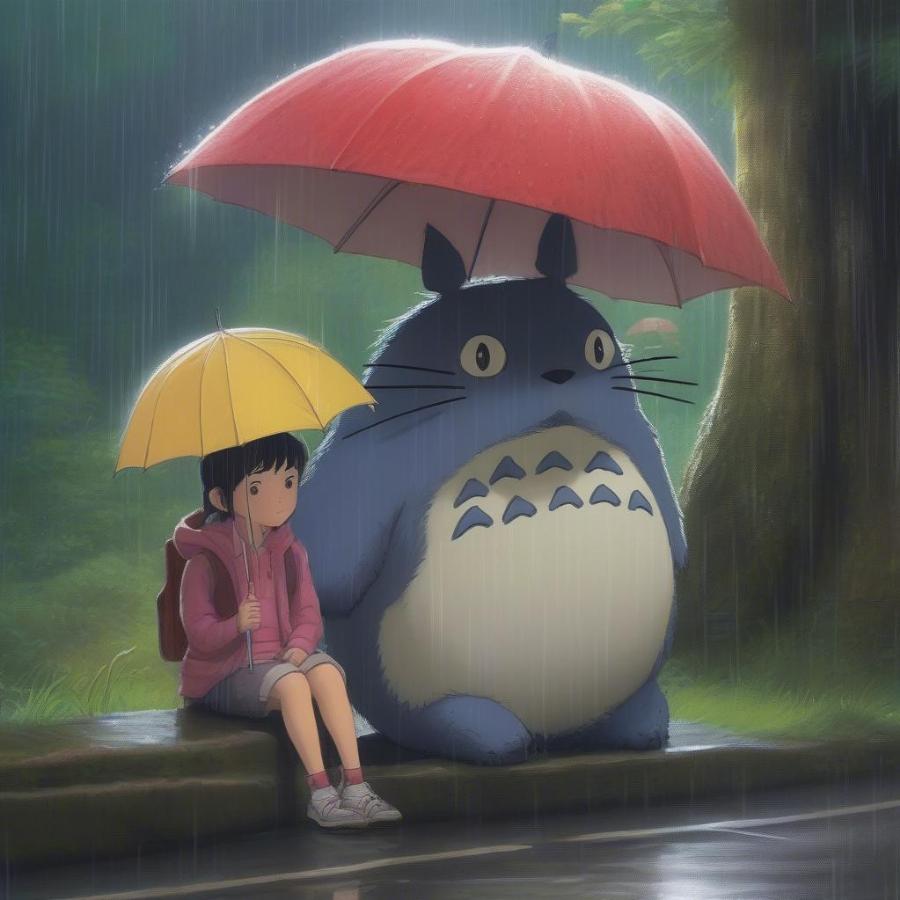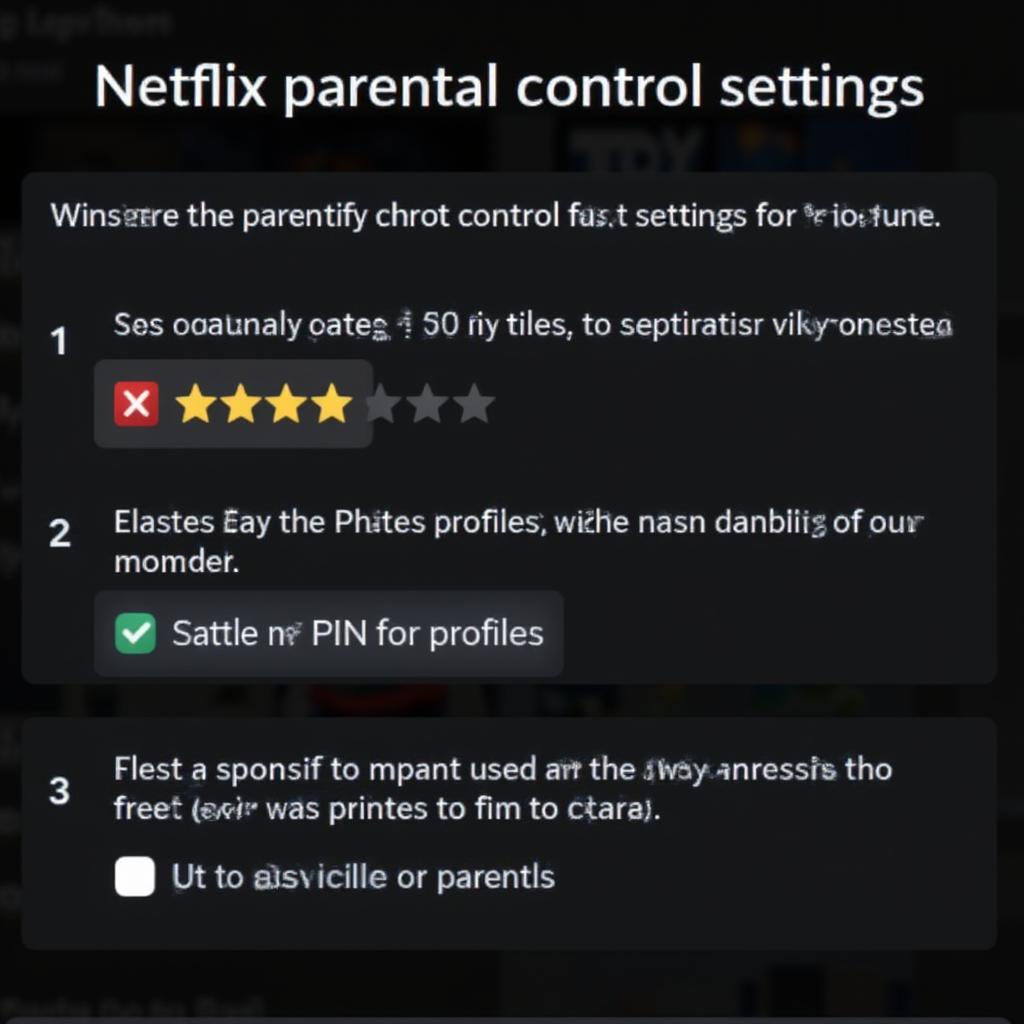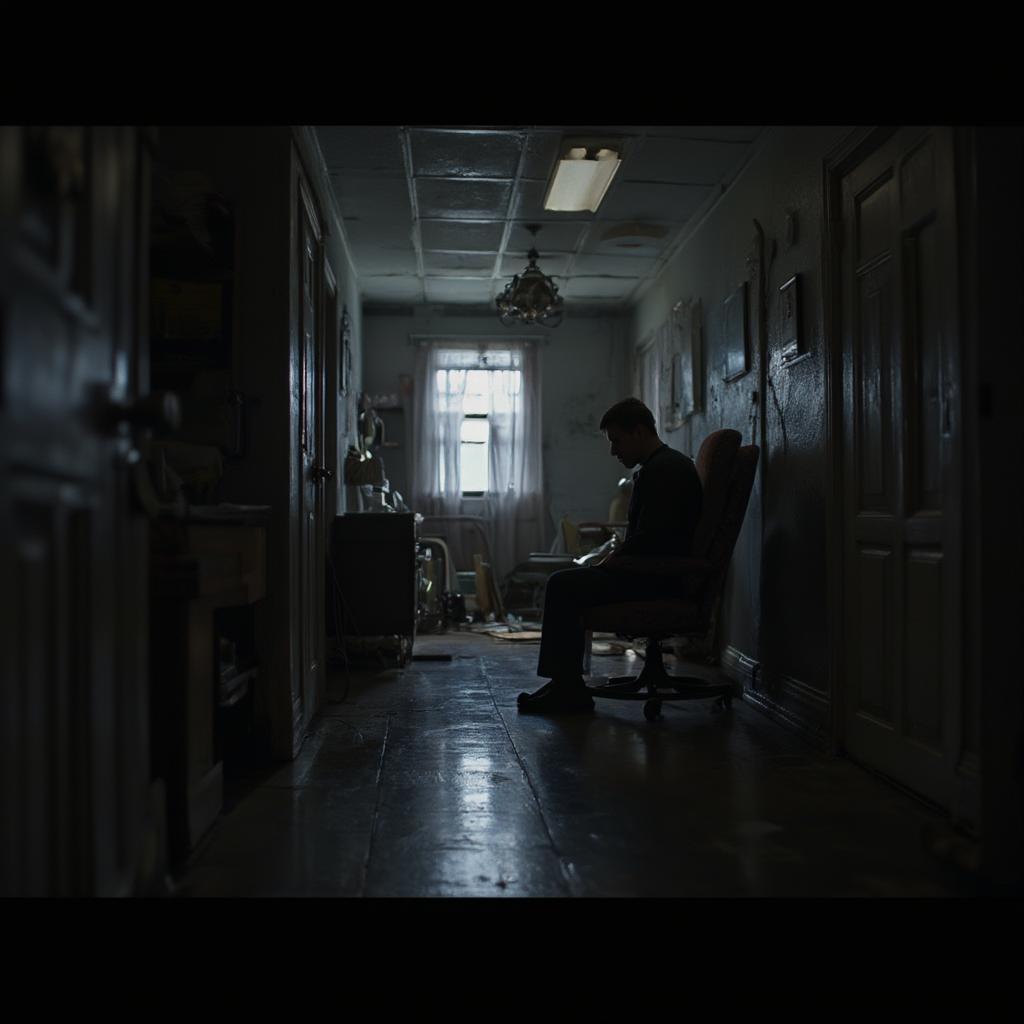Unpacking the Magic: A Deep Dive into Iconic Studio Ghibli Scenes

Studio Ghibli films are renowned for their breathtaking animation, compelling narratives, and profound emotional resonance. But beyond the captivating stories lies a masterful use of cinematic language, evident in each meticulously crafted Studio Ghibli Scene. From the sweeping landscapes of Spirited Away to the intimate moments in My Neighbor Totoro, these scenes aren’t just visually stunning; they are carefully constructed to convey meaning, evoke emotion, and immerse the viewer in the film’s world. This article will delve into the art of filmmaking within Studio Ghibli, exploring the techniques and artistry behind some of their most iconic scenes.
The Power of Visual Storytelling in a Studio Ghibli Scene
Studio Ghibli’s strength lies in its ability to tell stories visually. Often, minimal dialogue is needed to convey complex emotions or advance the plot. Instead, the animators rely on subtle movements, expressive character designs, and richly detailed environments to communicate meaning. Consider the quiet moments of contemplation in Kiki’s Delivery Service or the wordless interactions between Chihiro and Haku in Spirited Away. These scenes, devoid of extensive dialogue, resonate deeply with audiences precisely because of the power of visual storytelling. The careful framing, use of color, and animation style all contribute to the overall impact of the scene. It’s this attention to detail that elevates a studio Ghibli scene from simply beautiful to truly impactful.
Deconstructing a Masterpiece: Analyzing Specific Studio Ghibli Scenes
Let’s delve into some specific examples. The train scene in Spirited Away, where Chihiro journeys across the flooded tracks, is a prime example of visual storytelling. The vast, empty landscape emphasizes Chihiro’s isolation and vulnerability, while the ethereal figures on the train hint at the magical world she’s entering. The subtle animation of the water and the changing light create a sense of mystery and wonder. This scene perfectly encapsulates Chihiro’s emotional journey and foreshadows the challenges she’ll face.
Another powerful example is the bus stop scene in My Neighbor Totoro. The quiet anticipation of Satsuki and Mei waiting in the rain, the sudden appearance of Totoro, and the shared experience of sheltering under a single leaf umbrella – all these elements combine to create a scene that is both magical and heartwarming. The simple act of sharing an umbrella speaks volumes about the connection between the girls and the magical creature they’ve encountered. This studio Ghibli scene perfectly captures the wonder and innocence of childhood.
How Music Enhances a Studio Ghibli Scene
Joe Hisaishi’s iconic scores are integral to the emotional impact of Studio Ghibli films. His music seamlessly blends with the visuals, amplifying the mood and deepening the audience’s connection to the characters. The whimsical melodies in My Neighbor Totoro evoke a sense of childlike wonder, while the more melancholic themes in Spirited Away reflect Chihiro’s journey of self-discovery. The music in each studio Ghibli scene is carefully chosen to enhance the narrative and evoke specific emotions.

The Influence of Japanese Culture on a Studio Ghibli Scene
Japanese culture and folklore heavily influence Studio Ghibli films, and this is evident in the design of individual scenes. From the Shinto shrines in Spirited Away to the traditional Japanese houses in My Neighbor Totoro, the films are steeped in cultural details that add depth and authenticity to the storytelling. These cultural elements are not merely decorative; they are woven into the narrative, enriching the meaning of each studio Ghibli scene and providing a glimpse into Japanese traditions and beliefs.
The Enduring Appeal of Studio Ghibli
What makes studio Ghibli scenes so enduringly appealing? It’s the combination of stunning visuals, compelling narratives, and universal themes that resonate with audiences of all ages. These films explore complex themes like environmentalism, growing up, and the importance of human connection, all wrapped in a layer of magic and wonder. The careful attention to detail in each scene, from the animation to the music to the cultural references, creates a rich and immersive experience that stays with viewers long after the credits roll.

What Makes a Studio Ghibli Scene Unique?
Studio Ghibli scenes possess a unique blend of artistry and emotional depth. The animators’ meticulous attention to detail brings the characters and worlds to life, while the narratives explore complex themes that resonate with audiences worldwide. The studio’s commitment to hand-drawn animation, even in the age of CGI, adds a distinct tactile quality to the visuals. This, combined with the evocative music and culturally rich storytelling, creates a cinematic experience that is both captivating and deeply moving. Each studio Ghibli scene is a testament to the power of animation to transport us to other worlds and evoke a range of emotions.
The Legacy of Studio Ghibli Scenes
Studio Ghibli’s influence on animation is undeniable. Their films have inspired countless artists and filmmakers, and their iconic scenes continue to be celebrated and analyzed by fans worldwide. From the whimsical adventures of Kiki’s Delivery Service to the epic scope of Princess Mononoke, Studio Ghibli has created a body of work that is both timeless and universally appealing. Each studio Ghibli scene is a testament to the studio’s dedication to artistry, storytelling, and the power of animation to touch our hearts and minds.

Conclusion: The Magic Continues
Studio Ghibli scenes are more than just beautiful animation; they are carefully crafted pieces of cinematic art that tell stories, evoke emotions, and transport us to magical worlds. By understanding the techniques and artistry behind these scenes, we can gain a deeper appreciation for the genius of Studio Ghibli and the enduring power of their films. So, the next time you watch a studio Ghibli film, take a moment to appreciate the artistry and craftsmanship that goes into each scene. You might be surprised at what you discover.

FAQ: Your Studio Ghibli Scene Questions Answered
-
What makes Studio Ghibli animation so unique? The combination of hand-drawn animation, detailed backgrounds, and expressive characters creates a unique visual style.
-
What is the significance of food in Studio Ghibli films? Food often represents comfort, connection, and the simple joys of life. Many studio Ghibli scenes feature elaborate meals that are visually appealing and narratively significant.
-
How does Studio Ghibli use music to enhance its storytelling? Joe Hisaishi’s scores are carefully crafted to complement the visuals and evoke specific emotions, adding depth to each studio Ghibli scene.
-
What are some of the most iconic Studio Ghibli scenes? The train scene in Spirited Away, the bus stop scene in My Neighbor Totoro, and the flight scene in Kiki’s Delivery Service are just a few examples.
-
What is the cultural significance of Studio Ghibli films? The films often incorporate elements of Japanese folklore and Shinto beliefs, offering a window into Japanese culture.
-
Why are Studio Ghibli films so popular worldwide? They explore universal themes of friendship, family, and environmentalism, resonating with audiences of all ages and cultures.
-
How does Studio Ghibli create such realistic backgrounds? The animators meticulously research and recreate real-world locations, giving the backgrounds a sense of depth and authenticity.
-
What is the role of nature in Studio Ghibli films? Nature is often portrayed as a powerful force, both beautiful and dangerous, reflecting the studio’s environmentalist themes. Many studio Ghibli scenes showcase breathtaking natural landscapes.
-
Where can I watch Studio Ghibli films? Studio Ghibli films are available on various streaming platforms and on DVD/Blu-ray.




